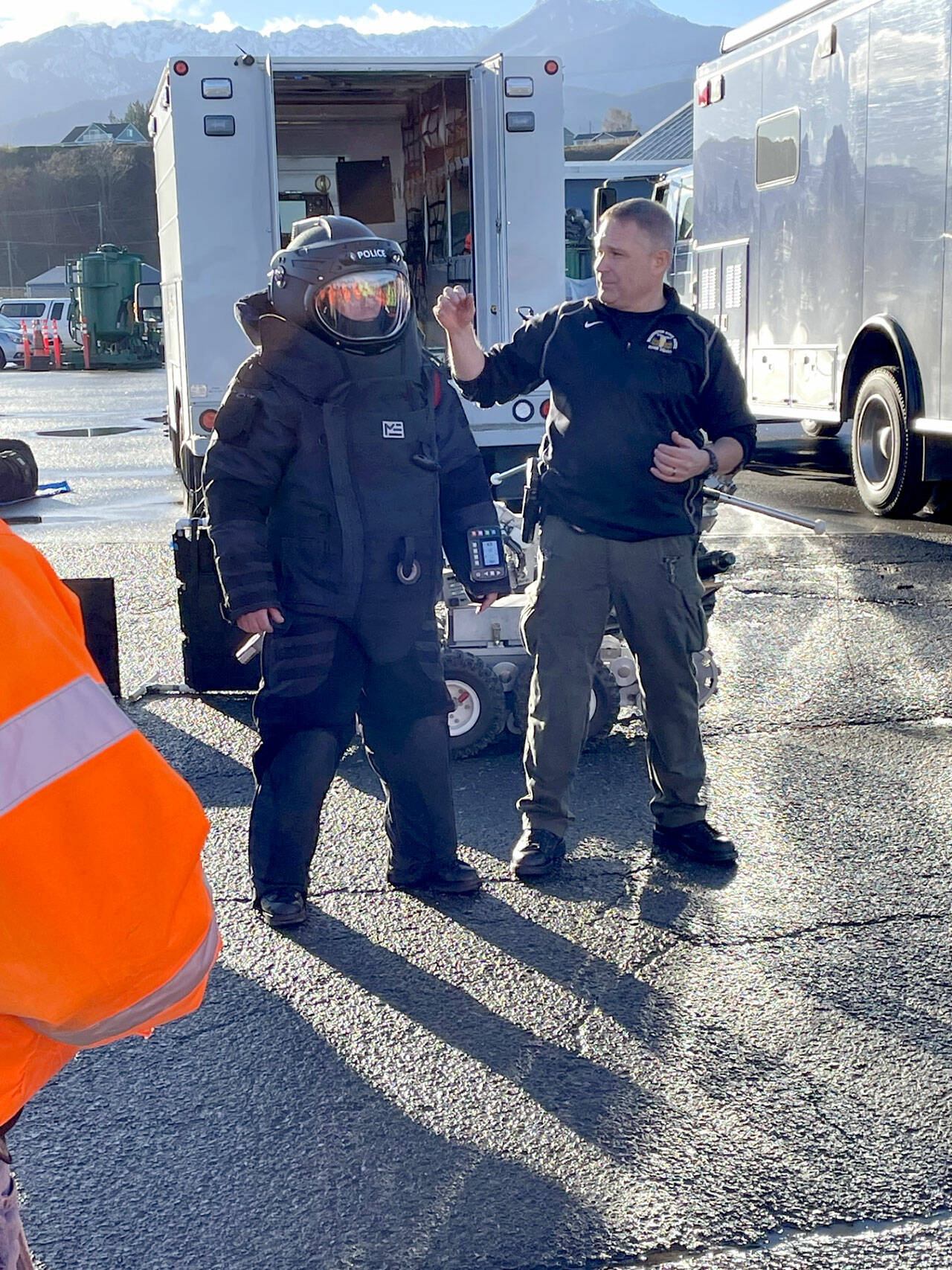PORT ANGELES — Five members of the Washington State Patrol Bomb Squad visited Marine Terminal 1 on the Port Angeles waterfront last week.
They weren’t there to detonate an improvised explosive device, identify a biochemical threat or investigate a suspicious package, but to make a presentation to members of the Port of Port Angeles security staff about the response protocols, tools and dynamics that would be in play should the largest public safety bomb squad in the state ever be activated.
“When you call us, you’re getting an interagency team that might have folks from Kitsap or other places,” said bomb squad commander Cliff Pratt on Friday.
Pratt is a 28-year veteran of the State Patrol and a bomb squad member for the last 18. They are trained to respond to chemical, biological, radiological, nuclear and energetic material threats.
“We’ve already responded to 368 calls this year. We’re easily running to about a call a day on average,” Pratt said.
Those aren’t all actual bombers planting devices, but they represent everything from bomb threats to threats at schools.
Nonetheless, he said, “Over 50 percent of our calls encompass a hazardous device like an IED or something that is bad.”
Pratt explained to port security staff best practices for receiving, assessing and responding to bomb threats, protocols for evacuations and preparing for the arrival of the bomb squad.
Head of port security Mike Simonson, who organized the visit, said his staff frequently reviewed the port’s emergency preparedness plan and protocols for threat response. It is still essential, he said, to invite high-level security experts like the bomb squad to explain their operations, demonstrate their equipment and answer questions.
The bomb squad brought with it four remote-controlled robots that Pratt said are always the team’s first choice when it has to assess a threat. If using a robot isn’t feasible, a bomb technician will don a 110-pound blast suit that completely covers him in heavy body armor except for his feet — so he could wear shoes appropriate for a fast getaway — and his hands — because gloves would impair his ability to quickly defuse a device like an IED.
Sophisticated — or simply deadly — IEDs could be made by just about anyone using readily available materials, Pratt said.
“That stuff is out there,” Pratt said. “The homemade explosive is the bane of our existence.”
The most common IEDs by far, are pipe bombs filled with any and all manner of material, he said.
“We have to figure out what it is and take it apart without getting hurt,” he said.
Marine terminals like the port’s have particular vulnerabilities, such as a long narrow pier that extends into the water, Pratt said.
“It is a very specific area with limited ingress-egress,” he said.
Although the bomb squad does not have its own vessels, it works closely with the U.S. Coast Guard and can also commandeer boats from local law enforcement if it needs to investigate a threat on or near water.
Mike Sutherland, 46, a marine terminal operations coordinator, said the presentation was a valuable reminder of what port staff already understands about responding to threats.
“It was good to know what they needed from us,” Sutherland said. “The more aware we are of what they want can help us help them.”
________
Reporter Paula Hunt can be reached at paula.hunt@peninsuladailynews.com.

